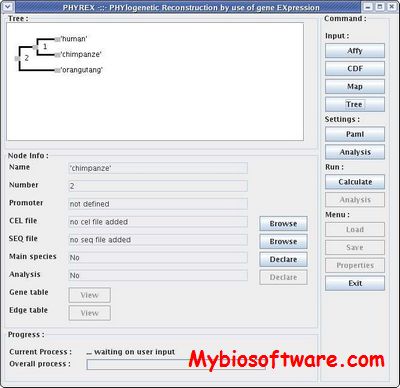Phyrex 1.1
:: DESCRIPTION
Phyrex (PHYlogenetic REconstruction by use of gene eXpression and alternate mRNA splicing patterns) is a program for reconstructing ancestral gene expression profiles and sequence data on a given phylogenetic tree. The program uses a Minimum Evolution algorithm to reconstruct the gene expression profiles and a combination of BaseML and ClustalW to reconstruct the ancestral sequences.
::DEVELOPER
:: SCREENSHOTS
:: REQUIREMENTS
- Windows/Linux/MacOsX
- Java
- C++ Compiler
:: DOWNLOAD
:: MORE INFORMATION
Citation
BMC Bioinformatics. 2005 May 27;6:127.
Phylogenetic reconstruction of ancestral character states for gene expression and mRNA splicing data.
Rossnes R, Eidhammer I, Liberles DA.
